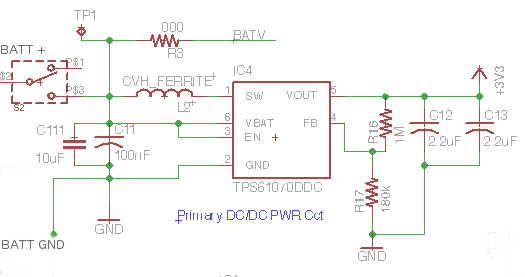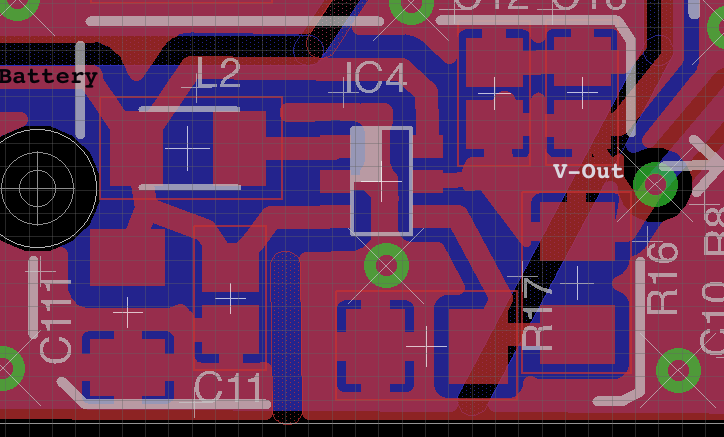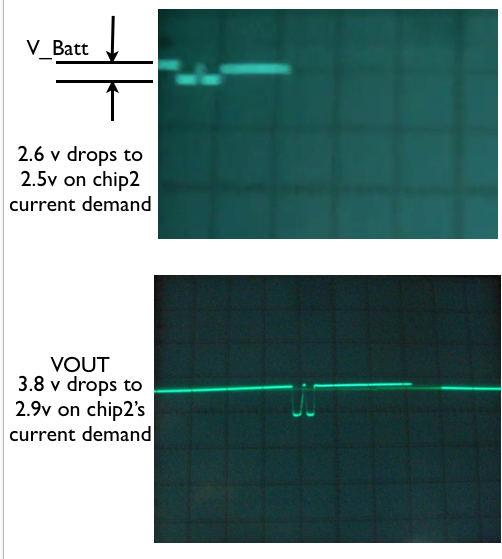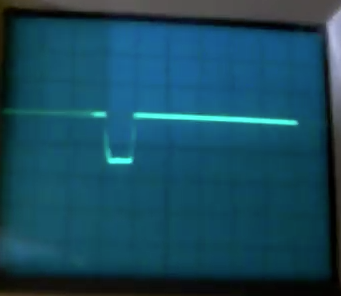I'm using 2 x AA cells to power a small cct with two loads (processor and another chip) via the 61070, pretty much following the spec's reference cct/values.
Using a 10uF tantalum input cap with a .1uF ceramic in parallel, a 4.7uH input inductor, and then for the output caps 2 x 4.7uF ceramic (0805). The circuit is set up for 3.3V. With just my processor loading it, it draws less than 10mA, and seems to manage 3.3V okay. But I had to isolate the second chip to get to this point. The second chip wants about 100mA to start then will settle to 30 or 40mA in a few seconds, but the 61070 doesn't seem to want to allow that.
The output voltage drops to about 1.8V if I include the 2nd chip in the load.
The spec curves seem to suggest handling 150mA shouldn't be a problem, particularly with 3+ volts battery voltage available. Even when the 61070 gives up, the battery is still providing 2.9V, plenty I'd have thought.
My layout SEEMS to be following the guidelines. The output caps are about 2mm from VOUT pin. The resistor divider, perhaps 3.5mm from FB-pin.
Any suggestions what I can do to get a stable output at 3.3V to run my circuit?
Thx
Ross.





